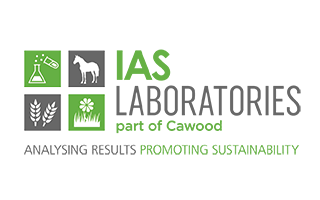Super slurry: how to prepare for slurry spreading season
11th January 2023
As we approach slurry spreading season in Ireland, and with ever increasing pressures on chemical fertilisers, it is more important than ever to know the nutrient values of your slurry.
In the past year, IAS Laboratories has seen huge differences in nutrient levels in slurry between slatted sheds and open tanks from the same farm. Analysis gives you accurate data to work with, which is vital when faced with so much variance in levels.
Why is it important to analyse slurry?
Slurries are a good source of key nutrients and trace elements, including phosphate and potash. Almost all the potash supplied by cattle slurry is crop available, and cattle farmyard manure is one of the best materials for providing a good amount of organic matter. This helps to enhance soil health when applied consistently over time, improving soil structure, water holding capacity, biological activity, retention and turnover of nutrients, resilience to unexpected weather conditions and, ultimately, crop productivity.
Despite all these advantages, the biggest benefit of applying slurry is in its nutrient content, which can potentially save you considerable money on inorganic fertilisers. You won’t truly know the nutrient value of your slurry without measuring it. Slurry analysis ahead of application helps to capitalise on the benefits it delivers, particularly as variation can arise from the material’s origin, its age, the animal diet, livestock type, and how it has been stored. Managing crop nutrition successfully relies on understanding exactly the nutrients you are applying. This data helps you tailor applications, saving you money by only applying the organic or chemical fertiliser that you need. It also helps reduce nutrient leaching, decreasing environmental impact.
When can I spread slurry?
The starting date for slurry spreading in Zone A in Ireland is 12th January 2023. Now is the time to determine the nutrients you have in your slurry so that you can incorporate it into your nutrient management plan for 2023. Remember that you must have applied all slurry by 8th October 2023.
The low-emission slurry spreading (LESS) method is now mandatory, depending on your grassland stocking rate and whether you produce and spread slurry from pigs. There are also other requirements depending on your farm. You can find more information on the new regulations for slurry spreading here.

Top tips for slurry spreading
- Timing your slurry application is vital for optimal use. For example, the LESS method can recover up to 50% more of the nitrogen content of slurry compared to the traditional splash plate method.
- Remember that a minimum buffer zone of 5m must be kept back from all drains—even those that are dry. Note: the 5 metre buffer zone is increased to 10m for a period of two weeks preceding and two weeks following the periods when application of fertilisers to land is prohibited.
- The best response to slurry application is achieved when the soil temperature is above 6°C and the grass is actively growing on drier ground. You can purchase your own digital soil thermometer from our website here.
How can I get my slurry tested?
Sampling and sending your slurry to IAS Laboratories couldn’t be easier. Simply collect 1 litre of agitated slurry for sending into the lab. If you have a few tanks, it’s best to keep the samples separate, as our results have shown huge variants from different tanks in the same farm.
Our test determines the levels of nitrogen, phosphorus, potassium, and dry matter that your slurry contains, reported in units per 1000 gallons.
When combined with soil sampling, slurry analysis will give you a more accurate picture of the fields that require slurry and whether or not your fertiliser bill can be reduced.
Contact us at [email protected] or on 059 9721022 to book in your tests.
